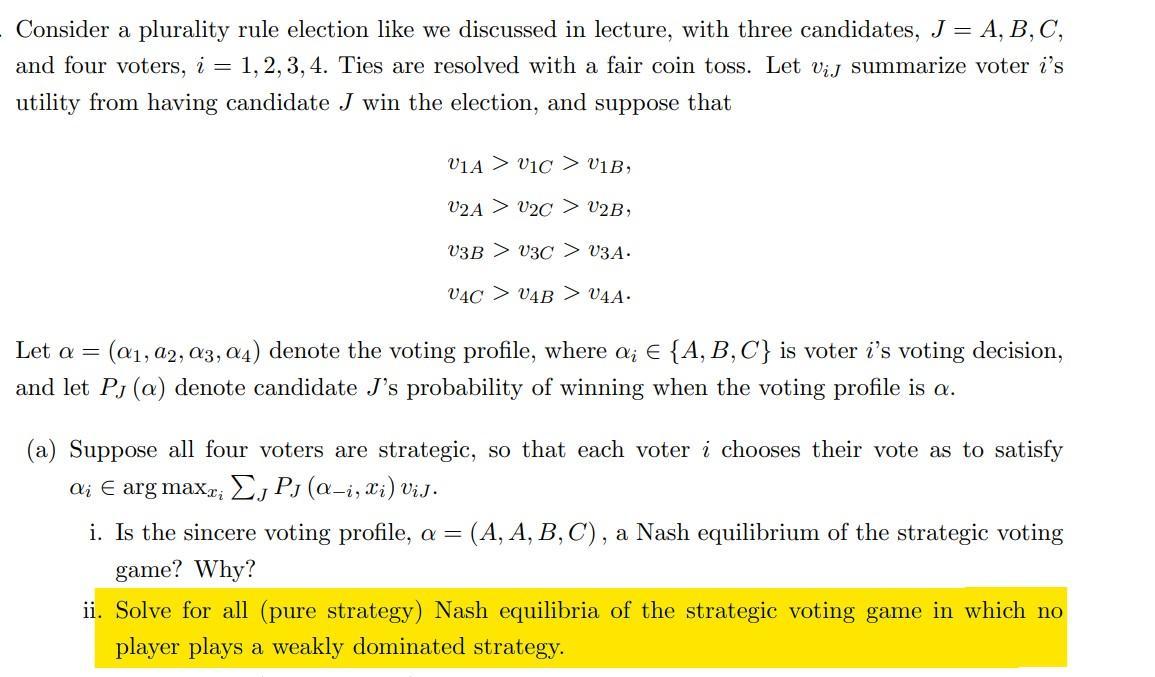Answered step by step
Verified Expert Solution
Question
1 Approved Answer
Consider a plurality rule election like we discussed in lecture, with three candidates, J = A, B, C, and four voters, i = 1,

Consider a plurality rule election like we discussed in lecture, with three candidates, J = A, B, C, and four voters, i = 1, 2, 3, 4. Ties are resolved with a fair coin toss. Let vij summarize voter i's utility from having candidate J win the election, and suppose that VIA > VIC > V1B, V2A > VC > V2B, V3B > V3C > V3A. VAC > VAB > V4A. Let a = (a1, a2, a3, a4) denote the voting profile, where a; {A, B, C) is voter i's voting decision, and let PJ (a) denote candidate J's probability of winning when the voting profile is a. (a) Suppose all four voters are strategic, so that each voter i chooses their vote as to satisfy ai e arg maxx, EJ PJ (a-i, xi) viJ. i. Is the sincere voting profile, a = (A, A, B, C), a Nash equilibrium of the strategic voting game? Why? ii. Solve for all (pure strategy) Nash equilibria of the strategic voting game in which no player plays a weakly dominated strategy.
Step by Step Solution
★★★★★
3.38 Rating (160 Votes )
There are 3 Steps involved in it
Step: 1
ANSWER To determine the Nash equilibria of the strategic voting game we need to find the voting profiles in which no player has an incentive to deviate from their chosen strategy given the strategies ...
Get Instant Access to Expert-Tailored Solutions
See step-by-step solutions with expert insights and AI powered tools for academic success
Step: 2

Step: 3

Ace Your Homework with AI
Get the answers you need in no time with our AI-driven, step-by-step assistance
Get Started


